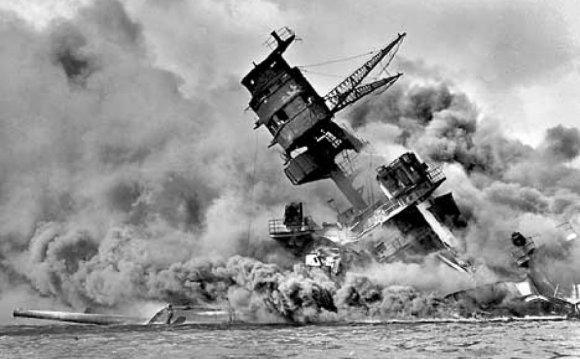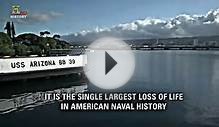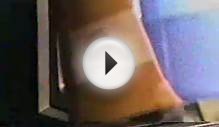
 Being a student of true history, I am astounded by the absolute crap that is taught to our children today in our failed education system. Our true history has been purposely hidden from our children, and instead our so called "History" books are packed with nothing more than lies and falsehoods. It has been my purpose in writing this blog to bring true history out into the open for everyone to see and read for themselves.
Being a student of true history, I am astounded by the absolute crap that is taught to our children today in our failed education system. Our true history has been purposely hidden from our children, and instead our so called "History" books are packed with nothing more than lies and falsehoods. It has been my purpose in writing this blog to bring true history out into the open for everyone to see and read for themselves.
One of the greatest lies in so called "recorded" history is the circumstances behind the Japanese attack on December 7th, 1941, on the US naval base at Pearl Harbor, Oahu island, Hawaii USA. Our "history" books continue to promote the lies that this attack was "unprovoked" and a "sneak attack" by the Japanese on an "unsuspecting" American fleet. The truth is that this attack was absolutely not a "sneak attack", and the American government knew exactly when and how the Japanese were to strike Pearl Harbor! The sad part is that 2400 American lives were extinguished that fateful day by the criminality of a regime in Washington that wanted desperately to get the US involved in World War II. It was a "day of infamy" indeed.
I came across the following article from The Telegraph online news service out of the United Kingdom, at www. telegraph.co.uk, entitled: "Pearl Harbour Memo Shows US Warned Of Japanese Attack", and it further vindicates everything that I have said for years about how the American government knew exactly when and how the Japanese were to attack Pearl Harbor. First, here is that article for my own readers to view, and I do have some further comments to follow:
It was described by President Franklin D.Roosevelt as "a date that will live in infamy", a day on which the slaughter of 2, 400 US troops drew into Second World War and changed the course of history.Now, on the 70th anniversary of Japan's devastating bombardment of the US Pacific Fleet at Pearl Harbour, Hawaii, evidence has emerged showing that President Franklin D.Roosevelt was warned three days before the attack that the Japanese empire was eyeing up Hawaii with a view to "open conflict."
The information, contained in a declassified memorandum from the Office of Naval Intelligence, adds to proof that Washington dismissed red flags signalling that mass bloodshed was looming and war was imminent.
"In anticipation of possible open conflict with this country, is vigorously utilizing every available agency to secure military, naval and commercial information, paying particular attention to the West Coast, the Panama Canal and the Territory of Hawaii, " stated the 26-page memo.Dated December 4, 1941, marked as confidential, and entitled "Japanese intelligence and propaganda in the United States, " it flagged up Japan's surveillance of Hawaii under a section headlined "Methods of Operation and Points of Attack."
It noted details of possible subversives in Hawaii, where nearly 40 per cent of inhabitants were of Japanese origin, and of how Japanese consulates on America's west coast had been gathering information on American naval and air forces. Japan's Naval Inspector's Office, it stated, was "primarily interested in obtaining detailed technical information which could be used to advantage by the Japanese Navy."
"Much information of a military and naval nature has been obtained, " it stated, describing it as being "of a general nature" but including records relating to the movement of US warships.
The memo, now held at the Franklin D.Roosevelt Presidential Library and Museum in upstate New York, has sat unpublicised since its declassification 26 years ago. Its contents are revealed by historian Craig Shirley in his new book "December 1941: 31 Days that Changed America and Saved the World."
Three days after the warning was delivered to the White House, hundreds of Japanese aircraft operating from six aircraft carriers unleashed a surprise strike on the US Navy's base at Pearl Harbour, wiping out American battleships, destroyers and air installations. A total of 2, 459 US personnel were killed and 1, 282 injured.
Conspiracy theorists have long claimed that Roosevelt deliberately ignored intelligence of an imminent attack in Hawaii, suggesting that he allowed it to happen so that he would then have a legitimate reason for declaring war on Japan. Up to that point, public and political opinion had been against America's entry into what was seen largely as a European war, despite Roosevelt's private support for the Allies' fight against the so-called Axis - Germany, Italy and Japan.
But Mr Shirley said: "Based on all my research, I believe that neither Roosevelt nor anybody in his government, the Navy or the War Department knew that the Japanese were going to attack Pearl Harbour.
There was no conspiracy.
"This memo is further evidence that they believed the Japanese were contemplating a military action of some sort, but they were kind of in denial because they didn't think anybody would be as audacious to move an army thousands of miles across the Pacific, stop to refuel, then move on to Hawaii to make a strike like this."
As with the September 11 terrorist attacks in 2001, US leadership was guilty of a "failure of imagination" in its inability to translate warning signs into a specific prediction of the horror that lay ahead, he said.
Roosevelt declared war on Japan the day after the blitz on Pearl Harbour. Japan, Germany and Italy reciprocated with their own declarations, but America's involvement in the war turned the tide against the Axis powers and ultimately led the Allies to victory.
Americans, who a year previously had been assured by Roosevelt that they would not be sent to fight foreign wars, suddenly found their fates transformed. The US military swelled, with 16 million heading off to war, and women took on new and more widespread roles in the workforce, and in the military.
Washington became a global power base and the War Powers Act gave the president supreme executive authority. The "America First" movement, which had lobbied against the country's entry into the war and at its peak had 800, 000 members, disbanded within days.
"December 7, 1941, was the powder-keg that changed the world. It changed America instantly from an isolationist country on the morning of December 7 to an internationalist country on the morning of December 8, " said Mr Shirley.
The 70th anniversary of the tragedy at Pearl Harbour is being marked with a week of commemorative events in Hawaii. They culminate on Wednesday in a minute's silence and a ceremony of remembrance overlooking the wreck site of the USS Arizona, which sank with the loss of 1, 177 lives.
RELATED VIDEO












